This article has mentions of products from one or more companies, and I may receive compensation if you purchase those products following reading my recommendations.
Clarity is one of the most important features in a diamond, as it is the thing that dictates both the visual purity of the diamond and its light performance. I’ve seen countless diamonds over my lifetime, and clarity and whether a diamond is eye-clean is one of the very first things I look for.
Now, inclusions—the internal imperfections that can affect a diamond’s look and light performance—are present in almost all diamonds. Some of them are incredibly visible, and others are completely imperceptible to the naked eye. There are various types of inclusions, and they’re a reminder that diamonds are completely naturally occurring phenomena, formed over millions of years.
However, a low-clarity diamond can quickly become a nightmare for owners and prospective buyers. With low clarity comes negative effects on light performance, but it does guarantee a smaller price tag. If you’re looking for an I1, I2, or I3 diamond, which do offer you lower prices, you need to work hard to find the right diamond.
An Introduction to I Clarity Diamonds
I clarity diamonds sit at the bottom of the GIA Diamond Clarity Chart, as you can see below. On the GIA’s diamond clarity page, they state that I (or ‘Included’) diamonds have inclusions that are “Inclusions are obvious under 10× magnification and may affect transparency and brilliance”.
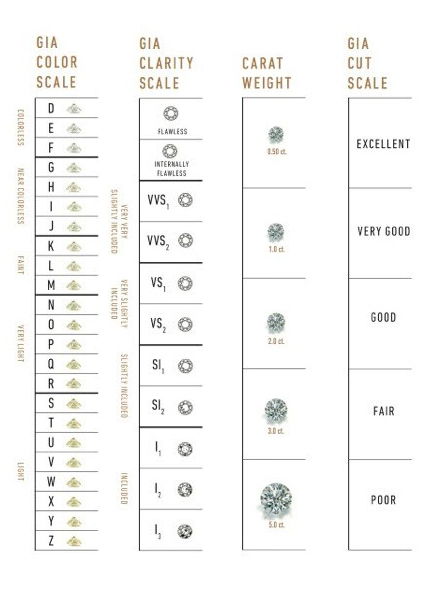
Now, I must admit that my preference is for higher clarity grades. With higher clarity grades you can easily find eye-clean diamonds, but it is possible to find a good I diamond—you just have to look incredibly hard.
Similarly, diamond cut will have a big effect on how clarity is perceived. For example, let’s compare two diamonds from James Allen.
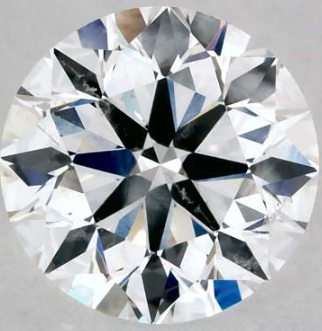 | 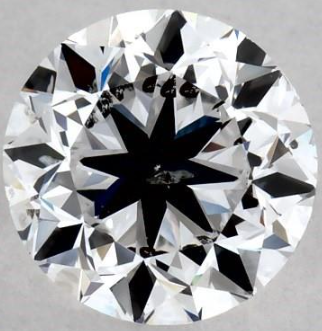 |
The diamond on the left is a D color 1.00 ctw I1 clarity diamond, and the diamond on the right is also a D color 1.00 ctw I1 clarity diamond, but can you tell which is the better cut quality? It’s evidently the one on the left. As you can see, the diamond on the left’s better quality cut (an Excellent cut) far exceeds at concealing the inclusions that are visible in the diamond than the one on the right.
Round cuts conceal inclusions better than step cuts due to the unique patterning of their facets, so if you’re looking for a lower clarity graded diamond, choose a Round cut over an Emerald or an Asscher.
What I find interesting is that, due to the lower clarity of I2 and I3, many well-known diamond retailers will not sell them, stopping their range at I1. This is partly because I2 and I3 diamonds are highly unlikely to be eye-clean, so I wouldn’t ever say you should buy them for engagement rings.
Some I1 diamonds may have inclusions that can be covered by the prongs in a setting, but you must use the documentation and high-res imaging that should come with the diamond’s description to determine just how prevalent those inclusions are and where they are.
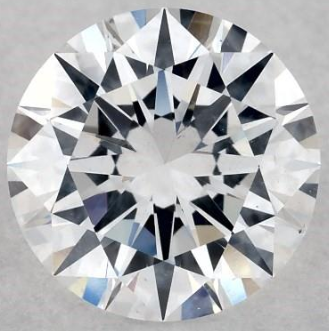 |  |
In this I1 Clarity Diamond available at James Allen, you can see that the inclusions are much harder to see than with other lower clarity diamonds. On the right is the inclusion plot graph supplied in the GIA certification, and shows that many of the inclusions sit towards the edge of the diamond, which could be covered by the right setting.
Are I1 Diamonds Better Than I2 and I3?
The answer is, quite simply, yes. There’s a reason I1 are graded higher than I2 and I3, as those latter gradings will have much more noticeable inclusions. Unfortunately, with all of these gradings, inclusions can compromise the durability of the diamond. In cases like these, when the diamond is put into a setting it can become damaged and therefore lose its potential as a jewelry diamond.
I1, I2, and I3 Diamond’s Light Performance
Light performance is the thing that most diamond lovers are looking for. If a diamond can’t sparkle, and doesn’t give off fire and brilliance, then what is the point? In my opinion, there’s nothing worse than a dull diamond.
Light performance should be the be-all and end-all for diamond lovers. With lower clarity diamonds, light performance can be seriously compromised. However, not always. Look at this 1.016 ctw SI1 Clarity diamond available at Whiteflash, which is part of their A CUT ABOVE® Hearts and Arrows Diamond range.
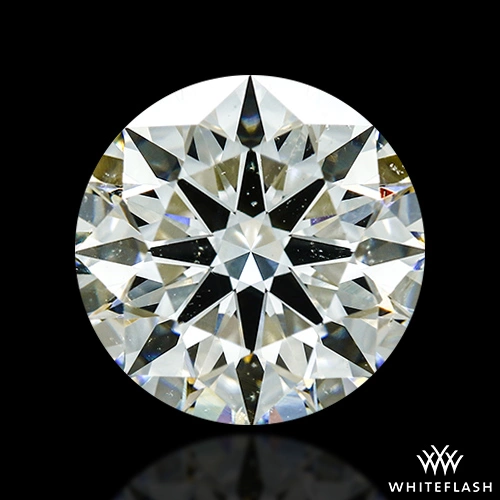 |  |
Yes, this is an SI1, which is a higher clarity than I diamonds. However, it’s a perfect example of how a lower clarity diamond can still produce sparkle and brilliance. Inclusions do cause issues with the transparency of the diamond, creating problems such as optical flaws.
What happens inside the diamond in scenarios like these is that the internal imperfections inhibit light from being refracted internally, as inclusions block or alter the path of light. This reduces the amount of light that exits the diamond. Anyone is able to tell whether a diamond is a little dull or not. Overall, if you’re worried about light performance, I would recommend choosing an SI1 clarity diamond at the very least. Even more so than that, go for an eye-clean diamond above everything else.
Are I1, I2, and I3 Clarity Diamonds Valuable?
These types of diamonds are the least valuable diamonds available. This means that you can buy them for cheap, but they’re naturally not as good quality. This also means that you won’t be able to get much for them in any resale scenario. If you’re on a smaller budget, better diamonds than I1-I3 can be found still for smaller amounts of money:
- You can find VS2 with smaller carat weights for affordable prices.
- Larger SI1 diamonds will also be more affordable.
- Consider choosing a lower color grade which will lower the price of a diamond.
My Final Thoughts
I don’t believe you should purchase an I1, I2, or I3 clarity diamond. Just in terms of durability alone, these types of diamonds can be weaker and are easily damaged, which will result in a waste of time and money. I would recommend diamonds that are VS2 or above, but you can find good quality SI1 diamonds if you look hard enough (which will be more affordable). VS2 and above diamonds will almost always be eye-clean and, when combined with an Excellent or Ideal cut, can be incredibly beautiful, delivering the perfect amount of sparkle and brilliance you want to see in fine jewelry or an engagement ring.
The four diamond retailers where you can buy top-quality loose diamonds are Whiteflash (with their A CUT ABOVE® Super Ideal diamonds or Precision Lab), James Allen, Brilliant Earth and Blue Nile.
